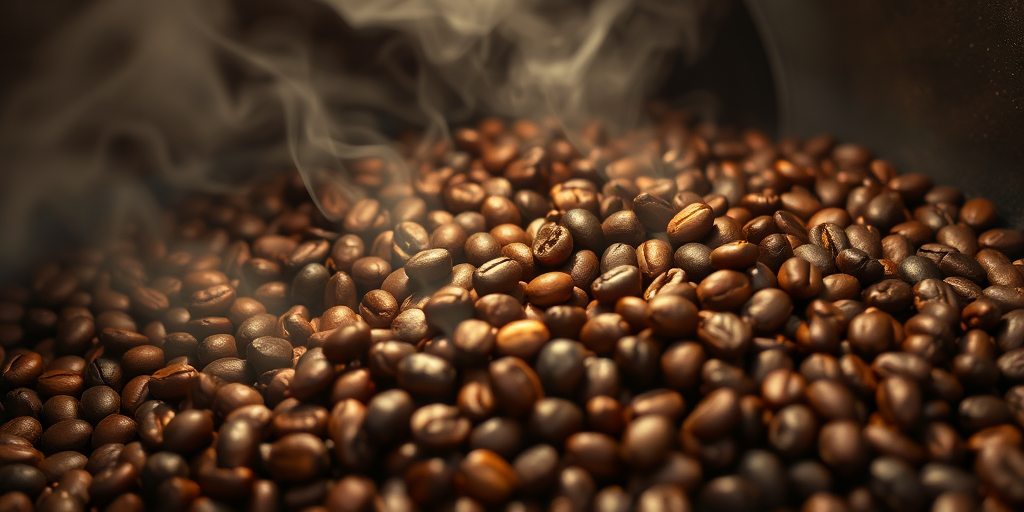Have you ever questioned how a seemingly bland bean transforms into an aromatic masterpiece? We take you on a detailed journey that unveils the secret science woven into each roast. From first-hand quality testing to precision heat control, our process blends meticulous measurement with innovative techniques to unlock maximum flavor potential. This exploration will reveal exactly how our methodical approach ensures every cup delivers exceptional taste, turning raw coffee seeds into the bold, flavorful brew you experience.
From Bean to Beast: The Art and Science of Roasting Transformation
We begin by transforming raw beans that initially present as flavorless and brittle into aromatic, robustly hued gems. The raw coffee seed undergoes complex physical and chemical changes as moisture evaporates, initiating browning reactions. This initial transformation lays the foundation for flavor development, as latent sugars begin to caramelize and intricate flavor compounds form, setting the stage for the bean’s remarkable evolution.
Our process leverages precise, step-by-step heating techniques guided by temperature probes that capture data at one-minute intervals during the initial 5–6 minutes and every 30 seconds as intensity builds. We carefully regulate heat to initiate moisture evaporation, control browning reactions, and trigger the first audible crack that signals the bean’s breakthrough stage. Such detailed observations ensure that every batch experiences a controlled, reproducible transformation.
This scientific approach guarantees consistency and meticulous flavor development by marrying art with technology and precision. By applying exact thermal dynamics during each stage of roasting, we ensure that the bean reaches its optimal flavor profile with every cycle. The integration of real-time data monitoring and systematic sampling allows our team to fine-tune temperature spikes and other transient phenomena, ultimately resulting in a consistently high-quality roast.
- Moisture evaporation
- Initiation of browning reactions
- Audible first crack
- Precise data sampling intervals
Through this methodical control of thermal dynamics, we achieve a transformation that not only adheres to rigorous quality standards but also unlocks a spectrum of flavors unique to each bean, ensuring an exceptional sensory experience in every cup.
From Bean to Beast: Roast Level Profiles and Flavor Metamorphosis
We embrace roast level profiles as a framework to reveal the inherent differences in our coffee’s journey from subtle to bold. Light roasts preserve delicate origin nuances and a vibrant acidity, medium roasts strike a balance with a rich mocha character, while dark roasts offer robust bitterness and a pronounced, full-bodied flavor. This spectrum allows us to cater to diverse palates, ensuring every cup resonates with its intended complexity.
Time and temperature are the architects of flavor, sculpting each roast profile through controlled transformation. Shorter roasting times deliver a less developed cup that highlights the bean’s inherent brightness and subtle aromas, whereas extended periods, if mismanaged, tend to yield generic, over-roasted flavors. By calibrating duration and thermal application, we can fine-tune the interplay between acidity and bitterness and ultimately unlock a rich fragrance that evolves, from delicate floral hints to a profound, bold finish.
Each roast profile brings distinct benefits to the final cup, empowering our consumers with clearly defined sensory experiences. The structured approach to roast duration preserves unique origin attributes in specialty roasts while delivering a comfortable, familiar flavor in standard profiles.
- Light: vibrant acidity and subtle floral notes
- Medium: balanced aroma with a mocha backbone
- Dark: pronounced bitterness with a deep, rich aroma
Final Words
In the action, our exploration embraced raw bean selection, precise temperature control, and critical quality measures that transform a bean into an exceptional brew.
We witnessed how each stage—from subtle caramelization to audible cracking and strategic cooling—builds a journey of flavor evolution.
This meticulous process reinforces our belief in precision and innovation.
Embracing every detail in “From Bean to Beast: Our Roasting Process Explained” assures us that every cup delivers excellence and a celebration of craft.
FAQ
Q: What are the main stages of coffee roasting?
A: The coffee roasting process consists of three primary stages: drying (moisture removal), browning (Maillard reaction and caramelization), and development (flavor enhancement and cooling).
Q: How does the coffee roasting process work?
A: Coffee roasting transforms raw beans through controlled heat application, typically starting at 350-400°F. The beans undergo moisture evaporation, color changes, and chemical reactions that develop distinct flavors.
Q: What are the different coffee roast levels?
A: Coffee roast levels include light (bright, acidic, origin-forward), medium (balanced, caramel notes), and dark (bold, bittersweet). Each level creates unique flavor profiles through specific temperature and timing.
Q: What equipment is needed for professional coffee roasting?
A: Professional coffee roasting requires a commercial roaster, temperature probes, cooling system, and quality control tools like Agtron meters for color testing and weight measurement devices.
Q: How do you determine coffee roast quality?
A: Quality assessment involves monitoring roast loss percentages (13-23%), color consistency, aroma development, and precise temperature control throughout the process using specialized measurement tools.
Q: What is the first crack in coffee roasting?
A: First crack occurs around 385°F when beans expand and make an audible popping sound, indicating the beginning of flavor development and the transition from drying to roasting phase.
Q: How long does it take to roast coffee beans?
A: A typical coffee roasting cycle takes 10-15 minutes, with careful monitoring required every 30 seconds after the initial 5-6 minutes for optimal flavor development.

